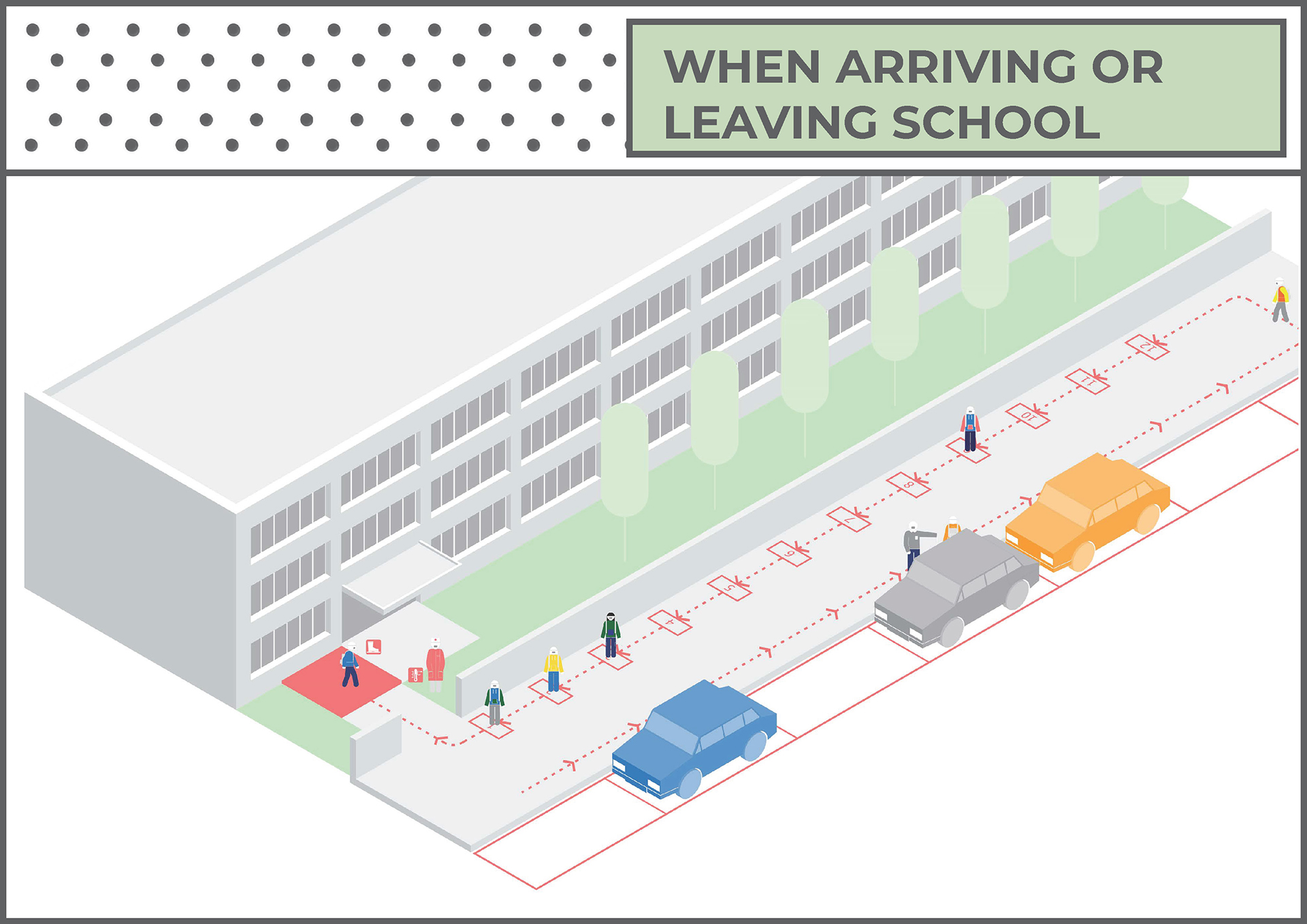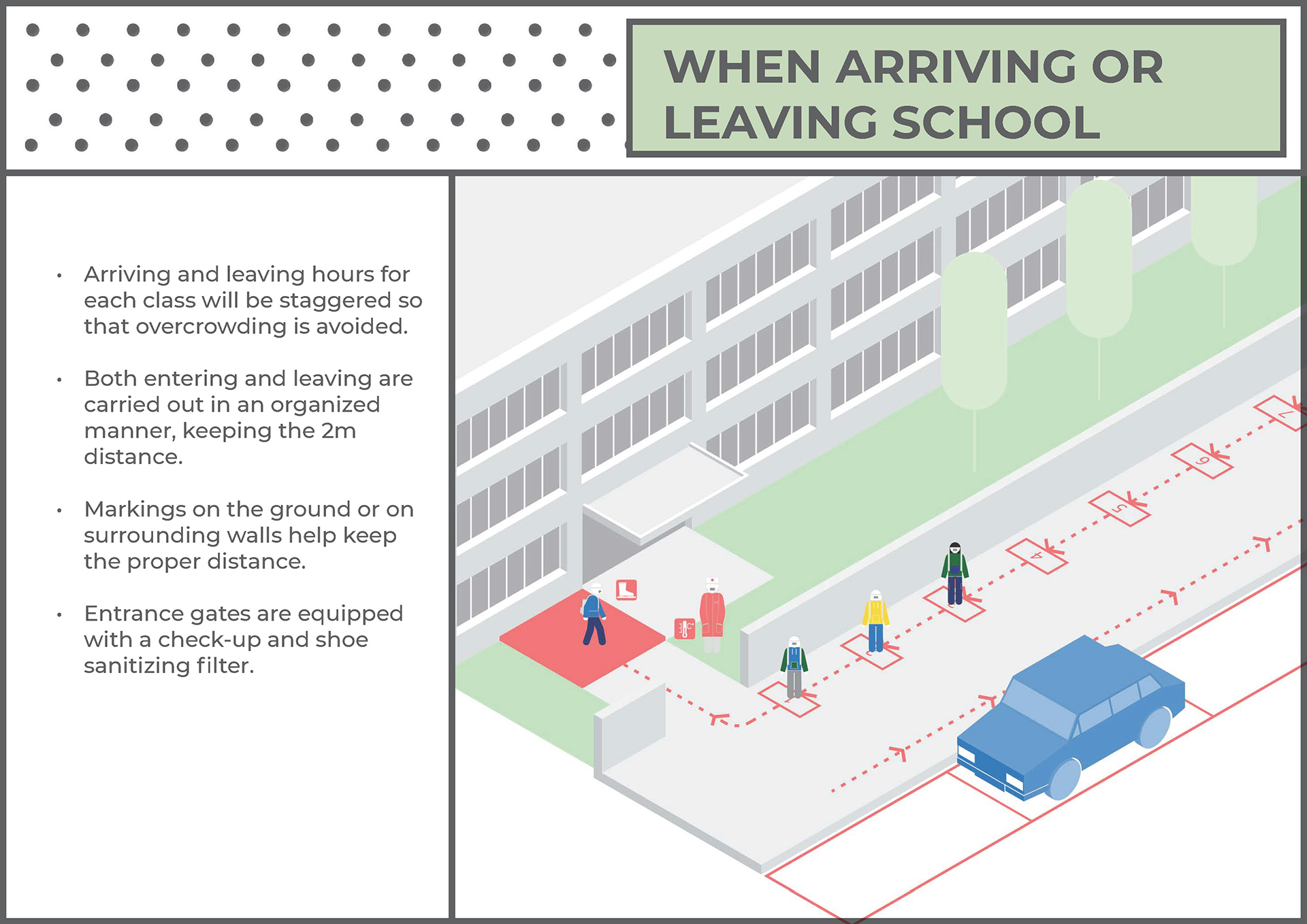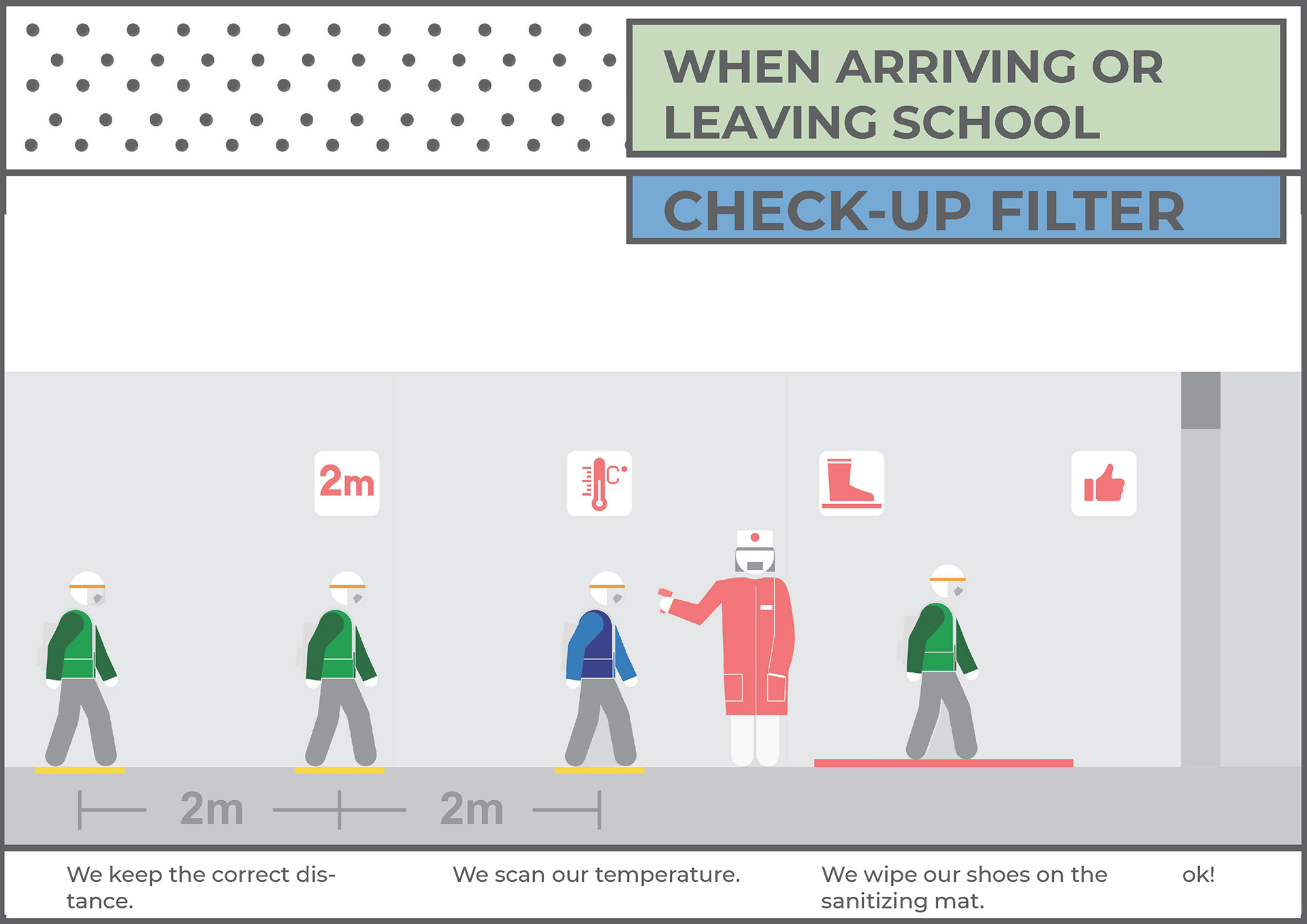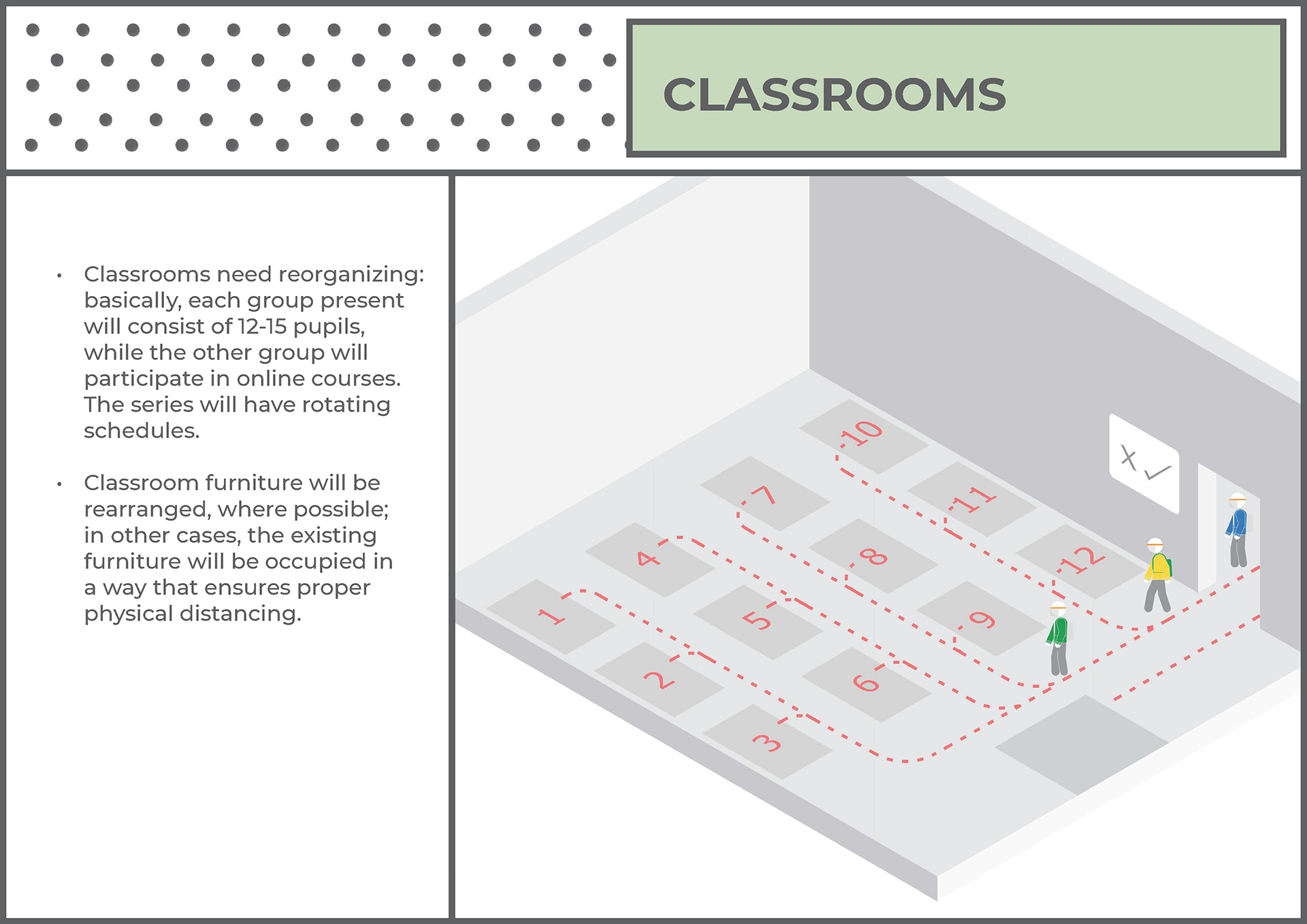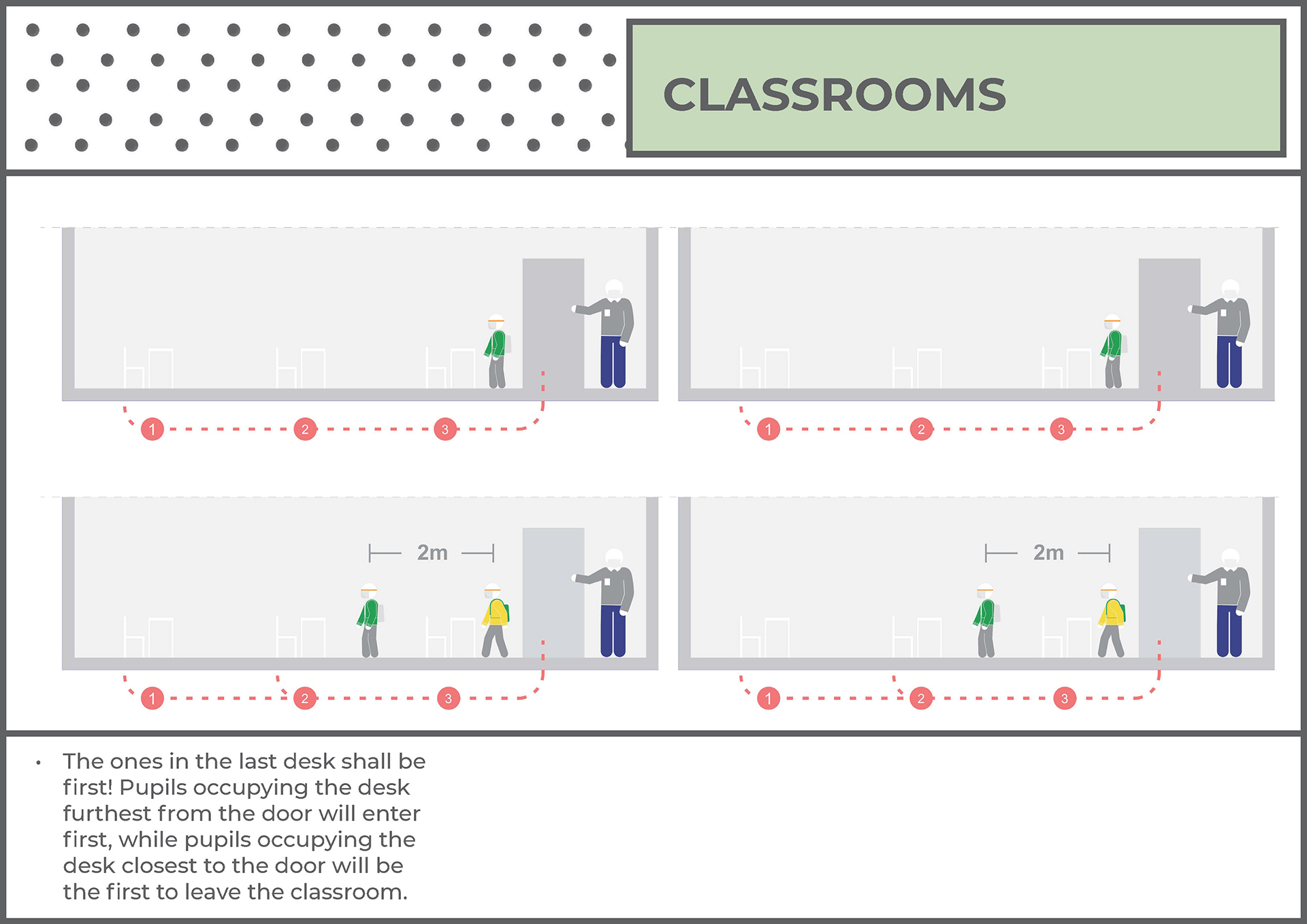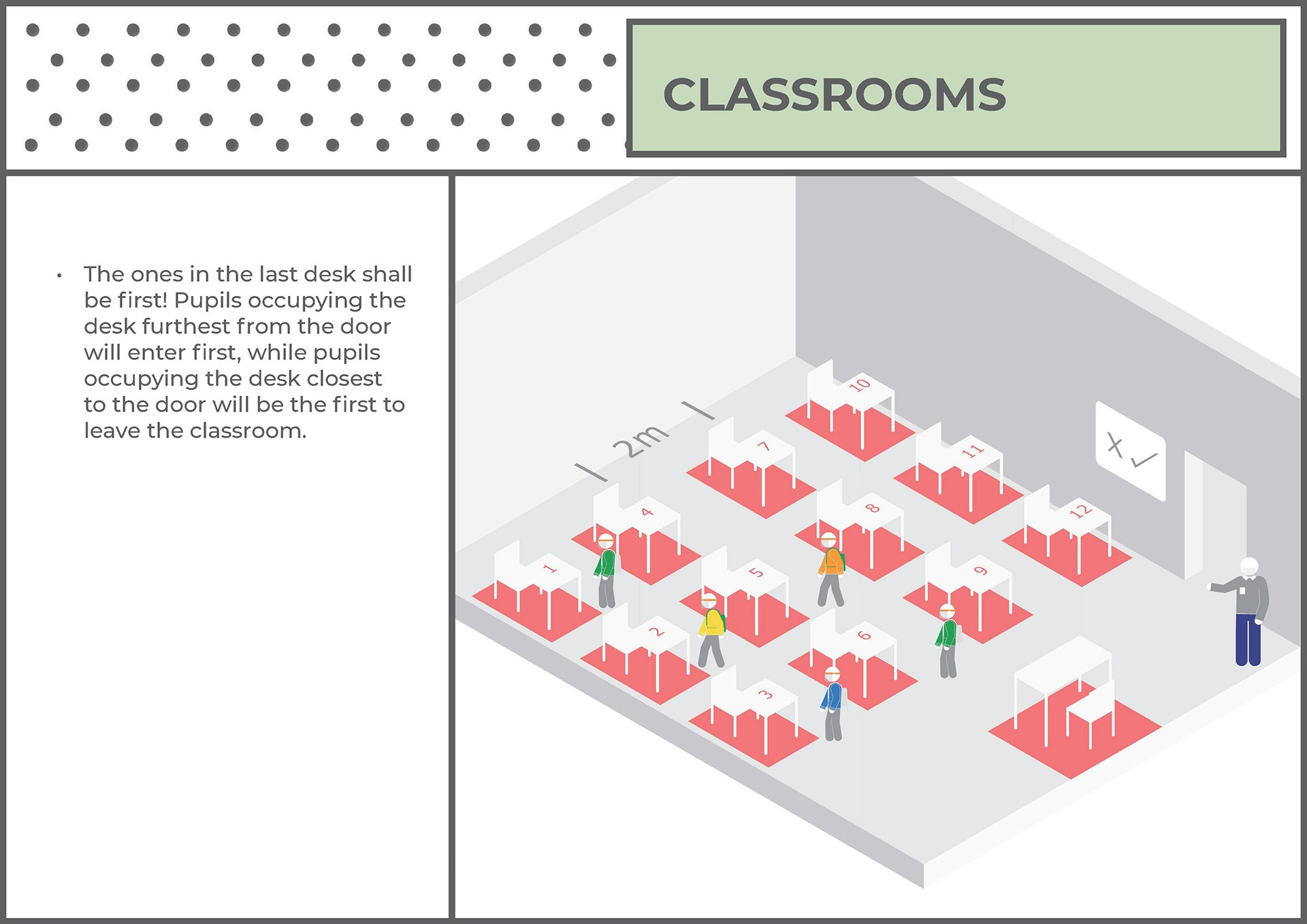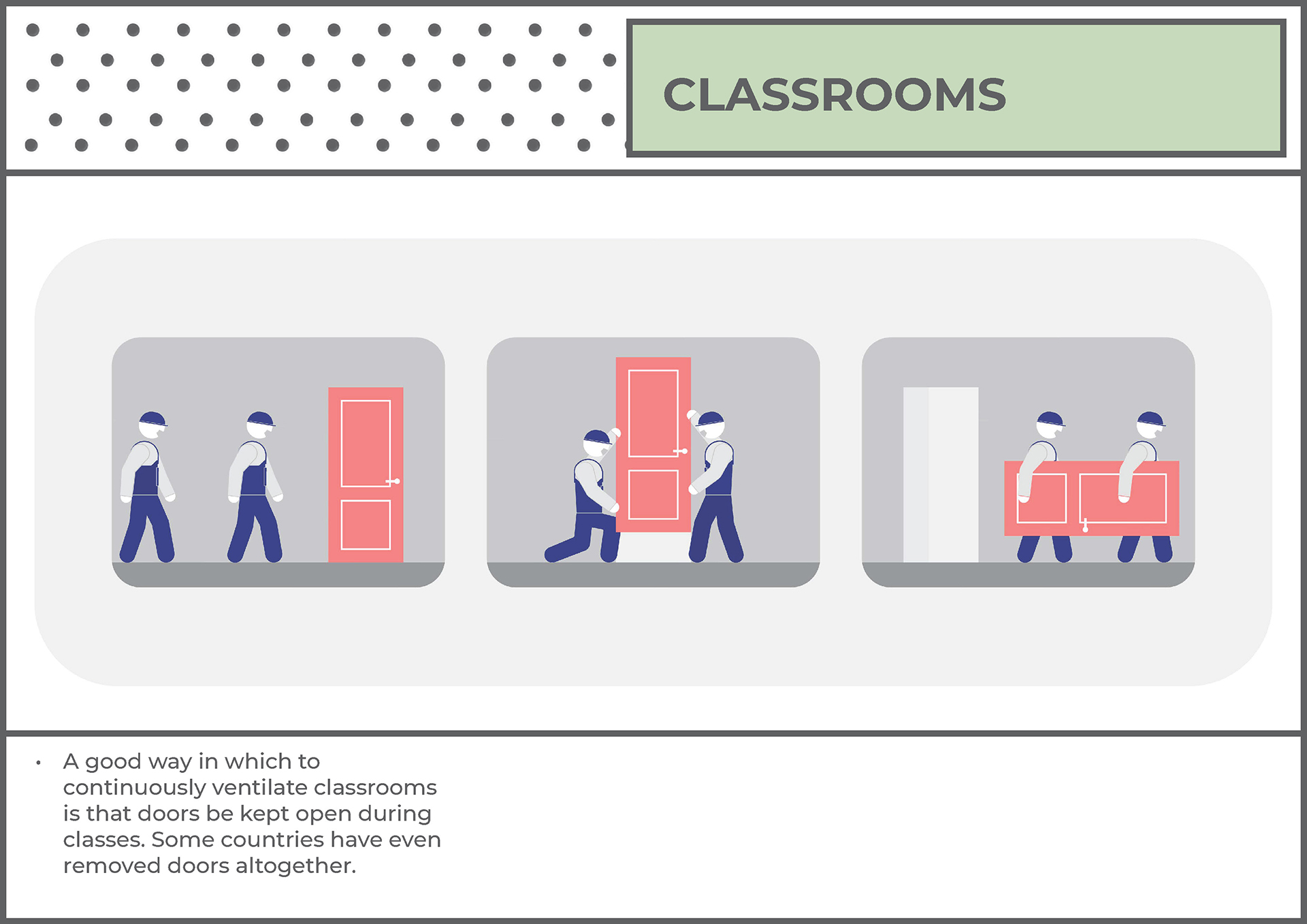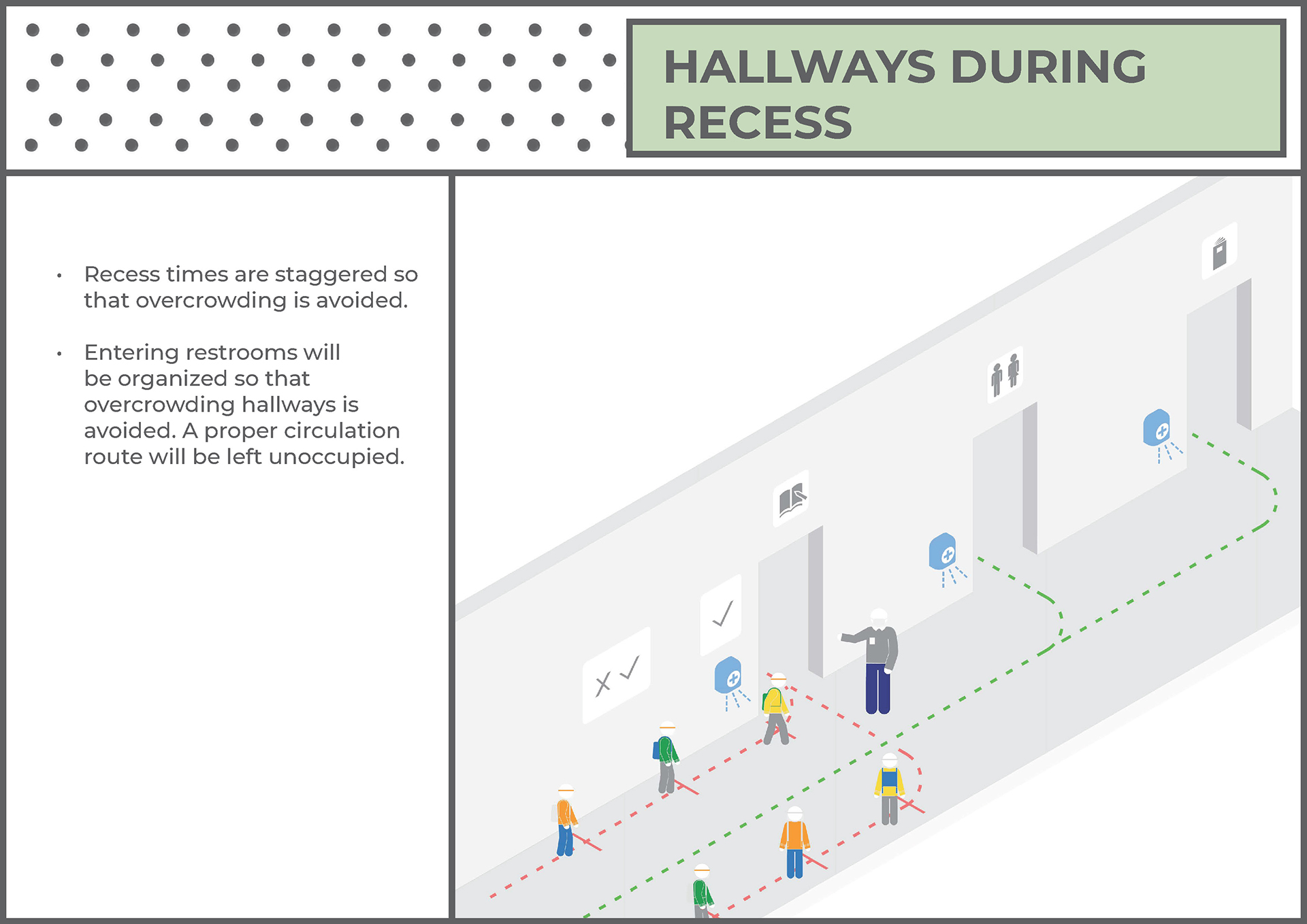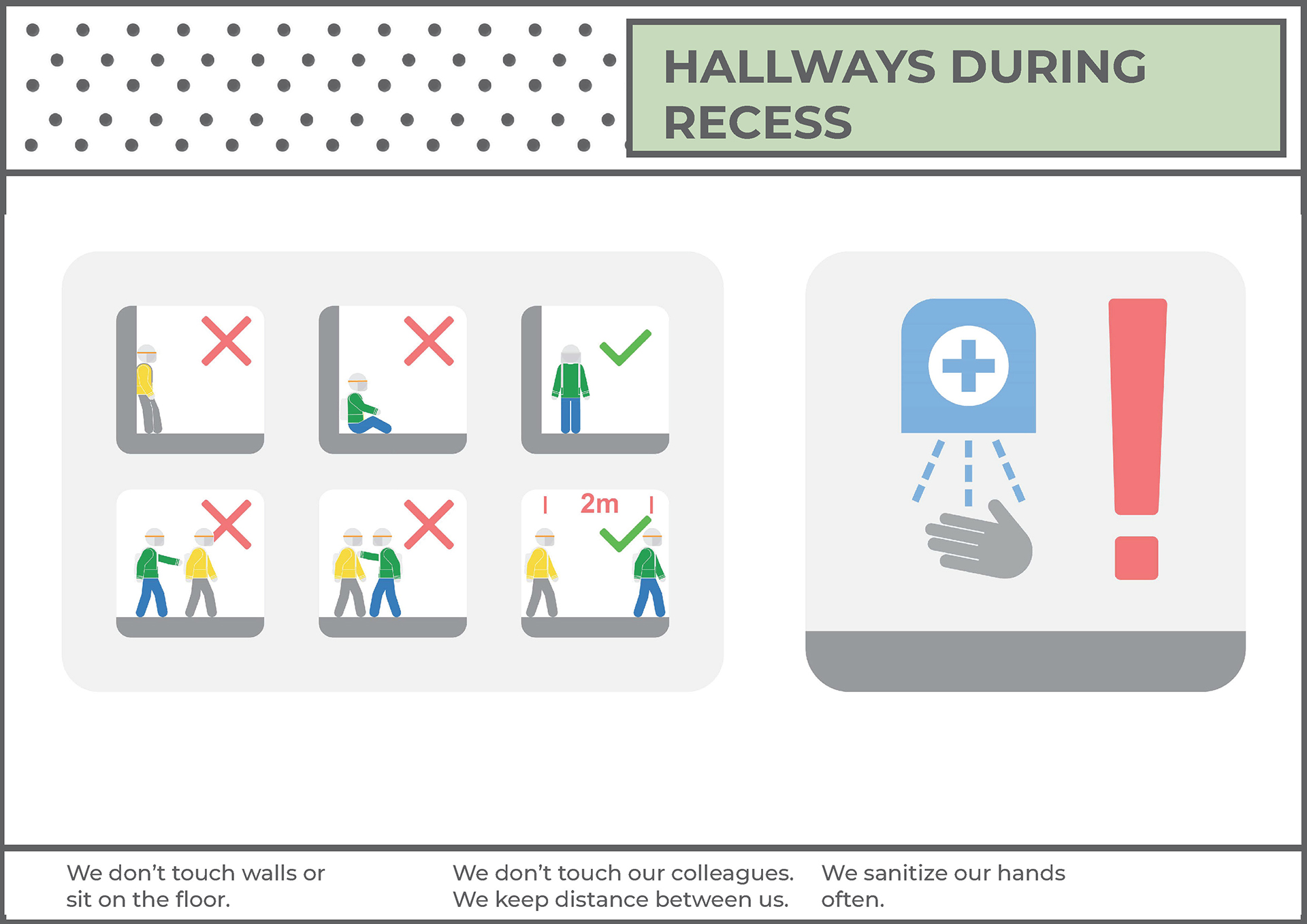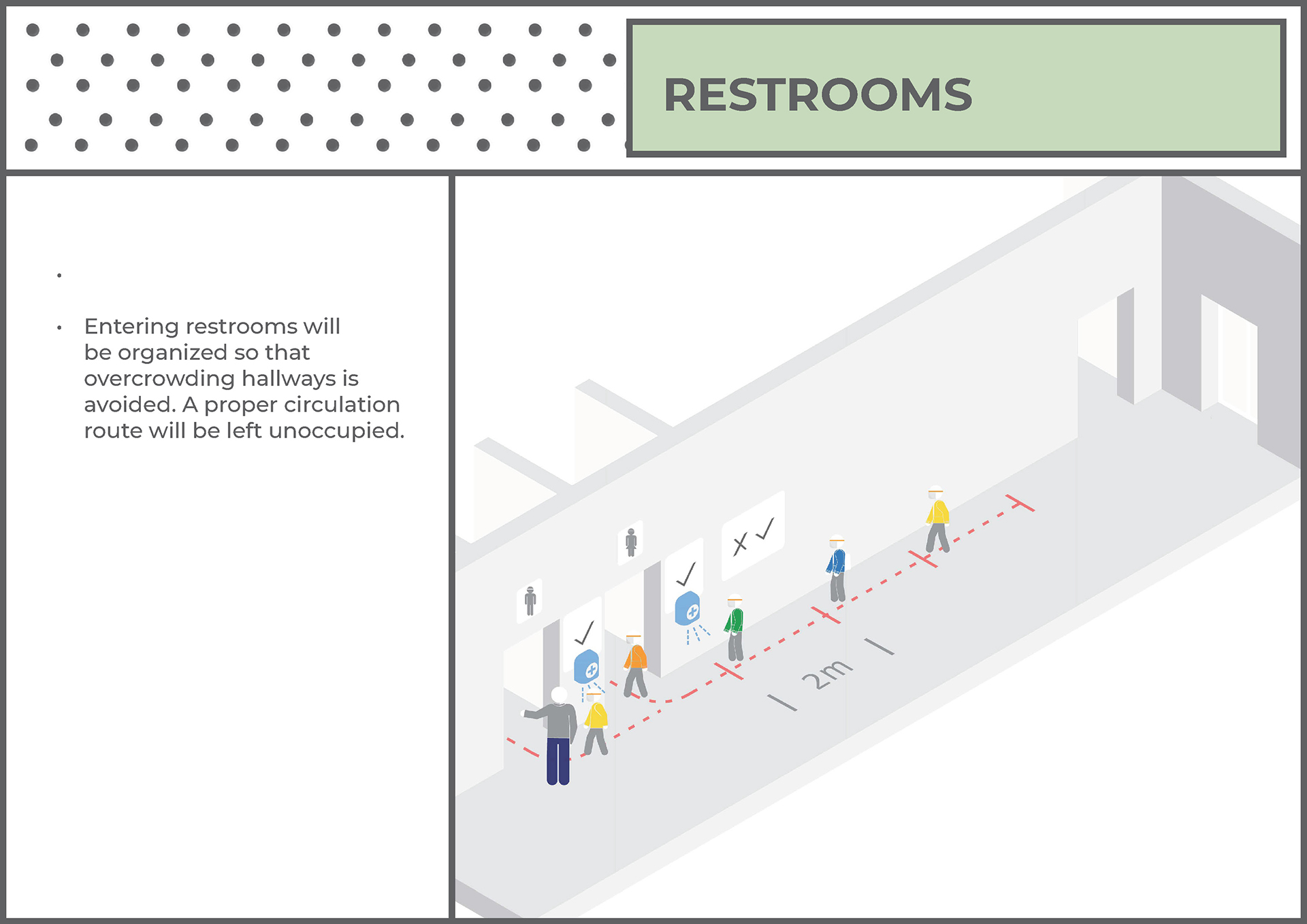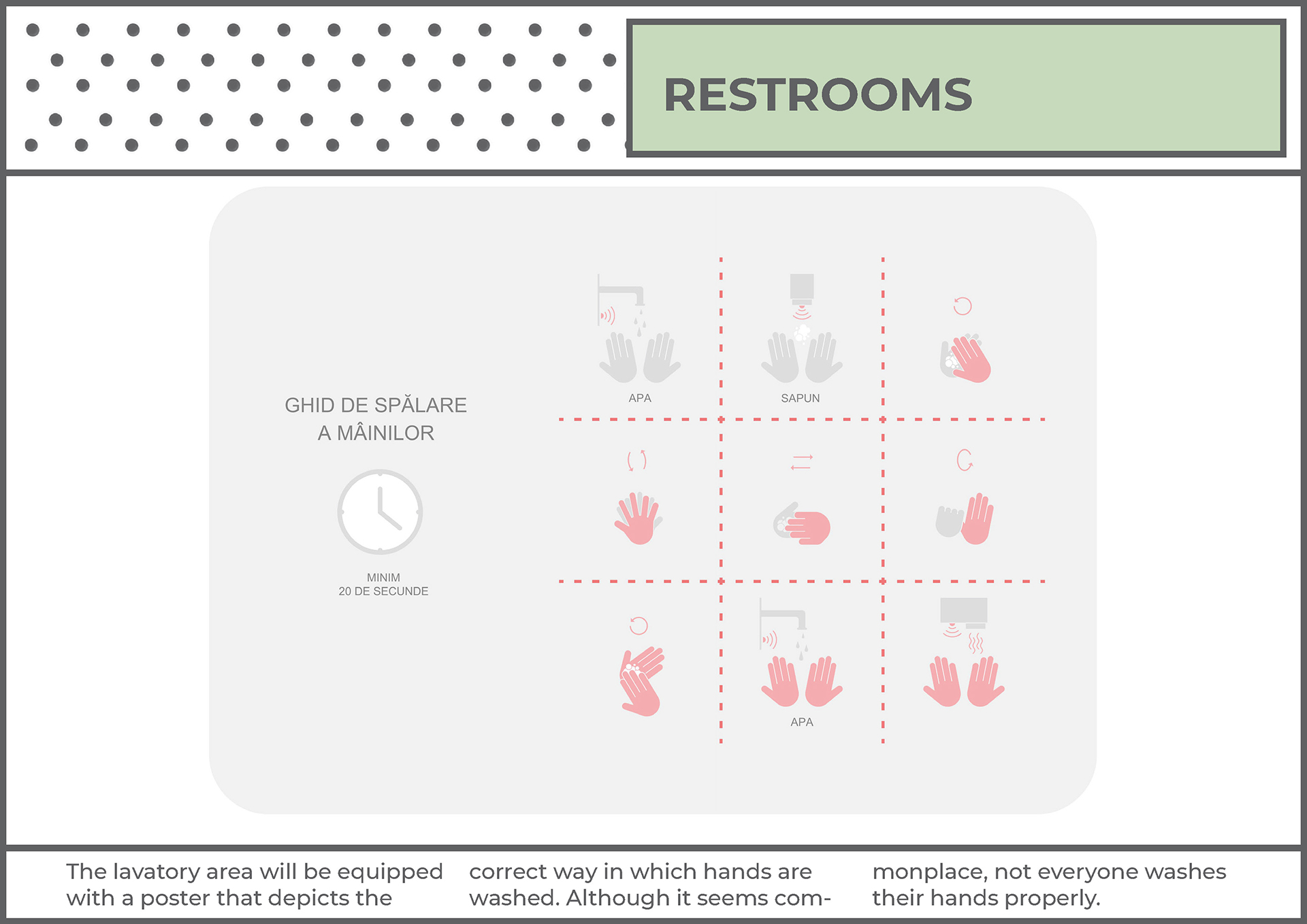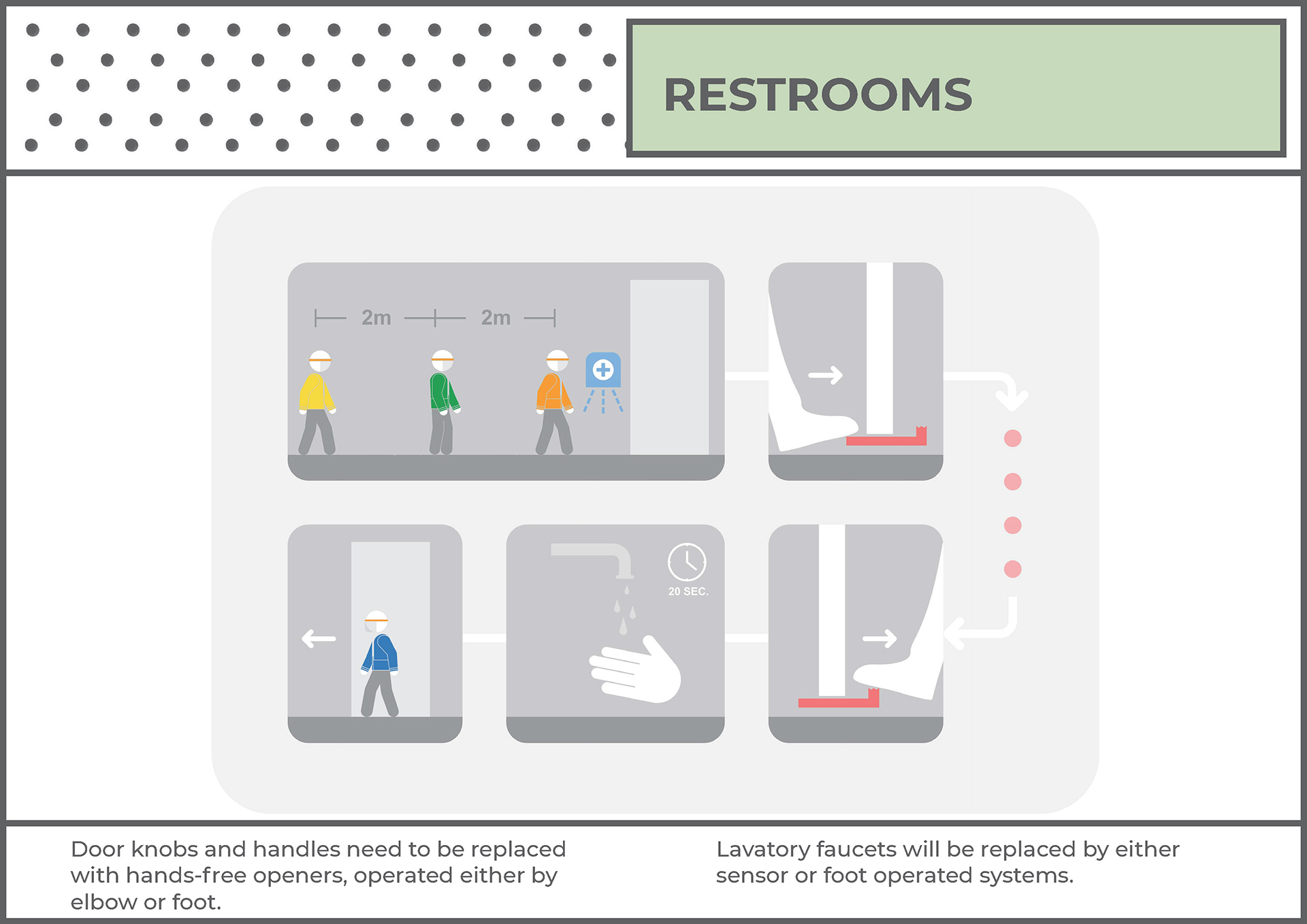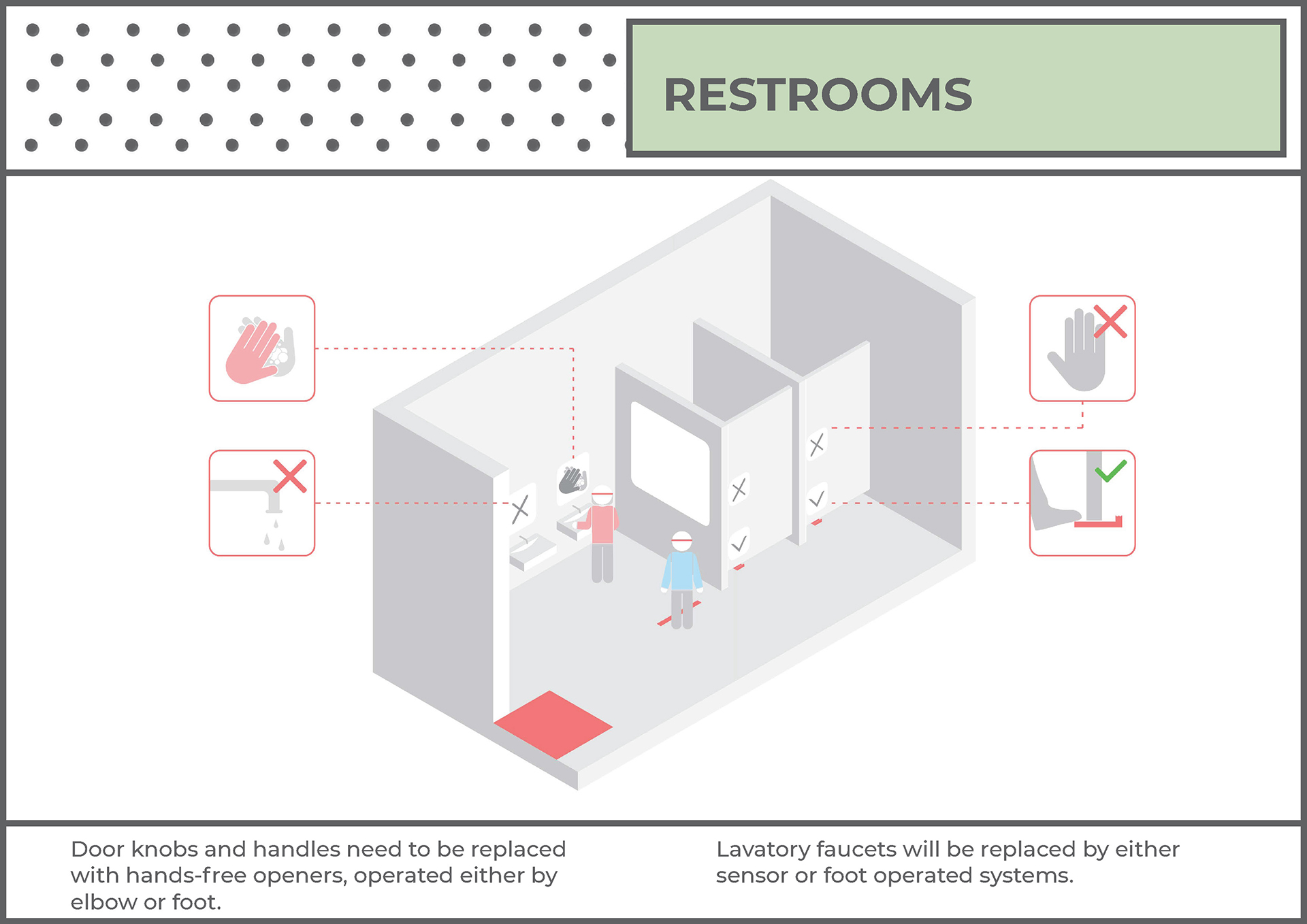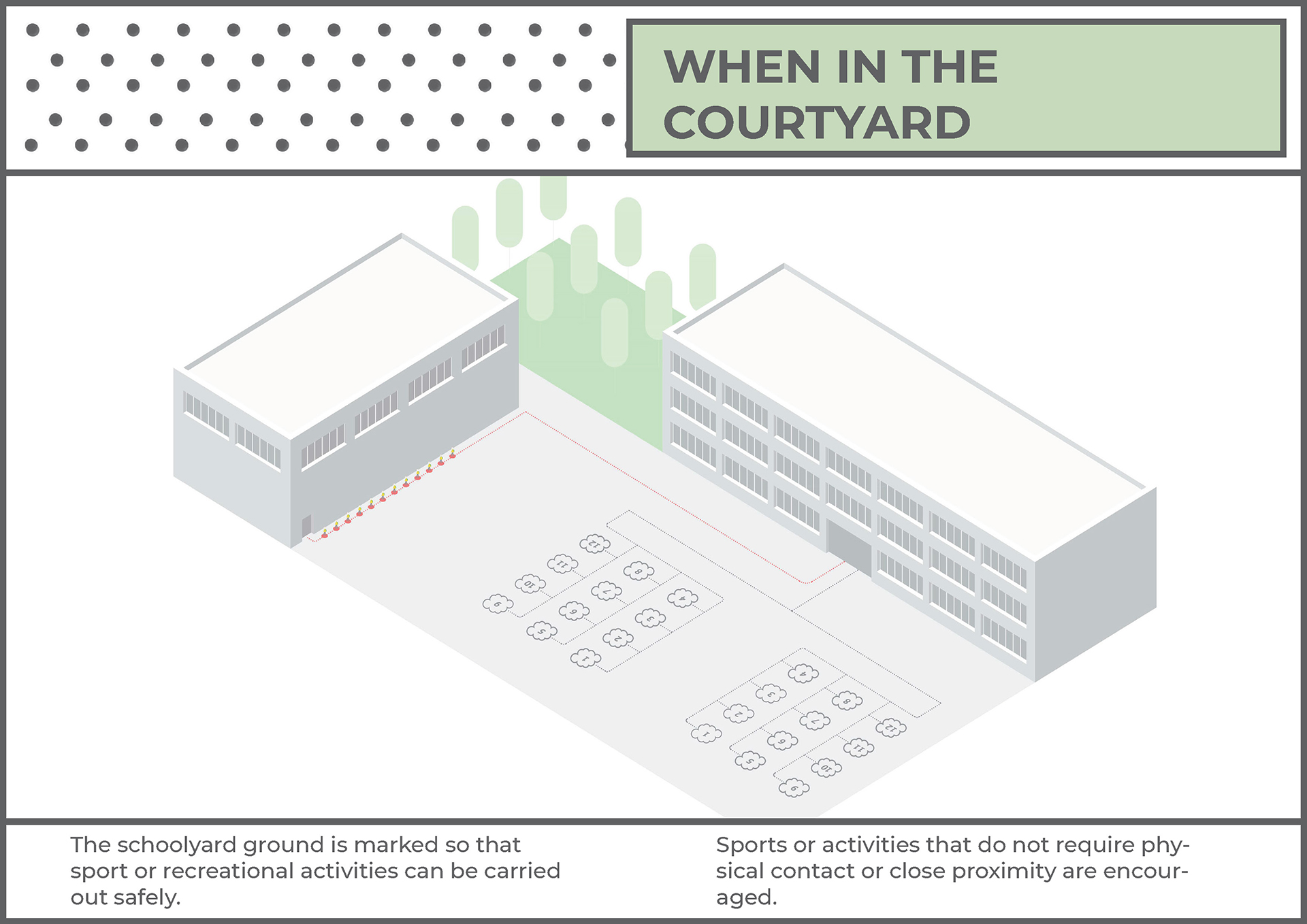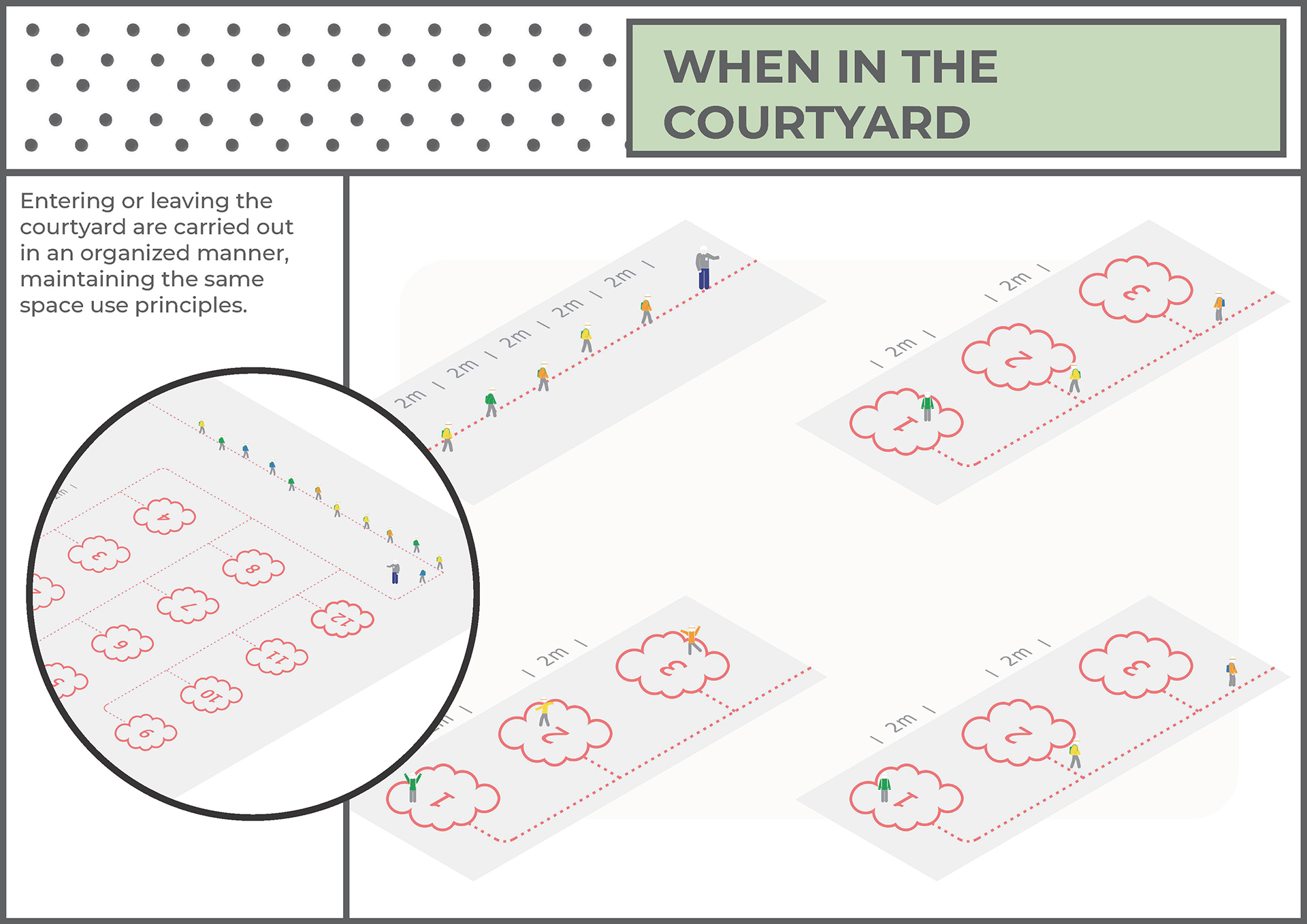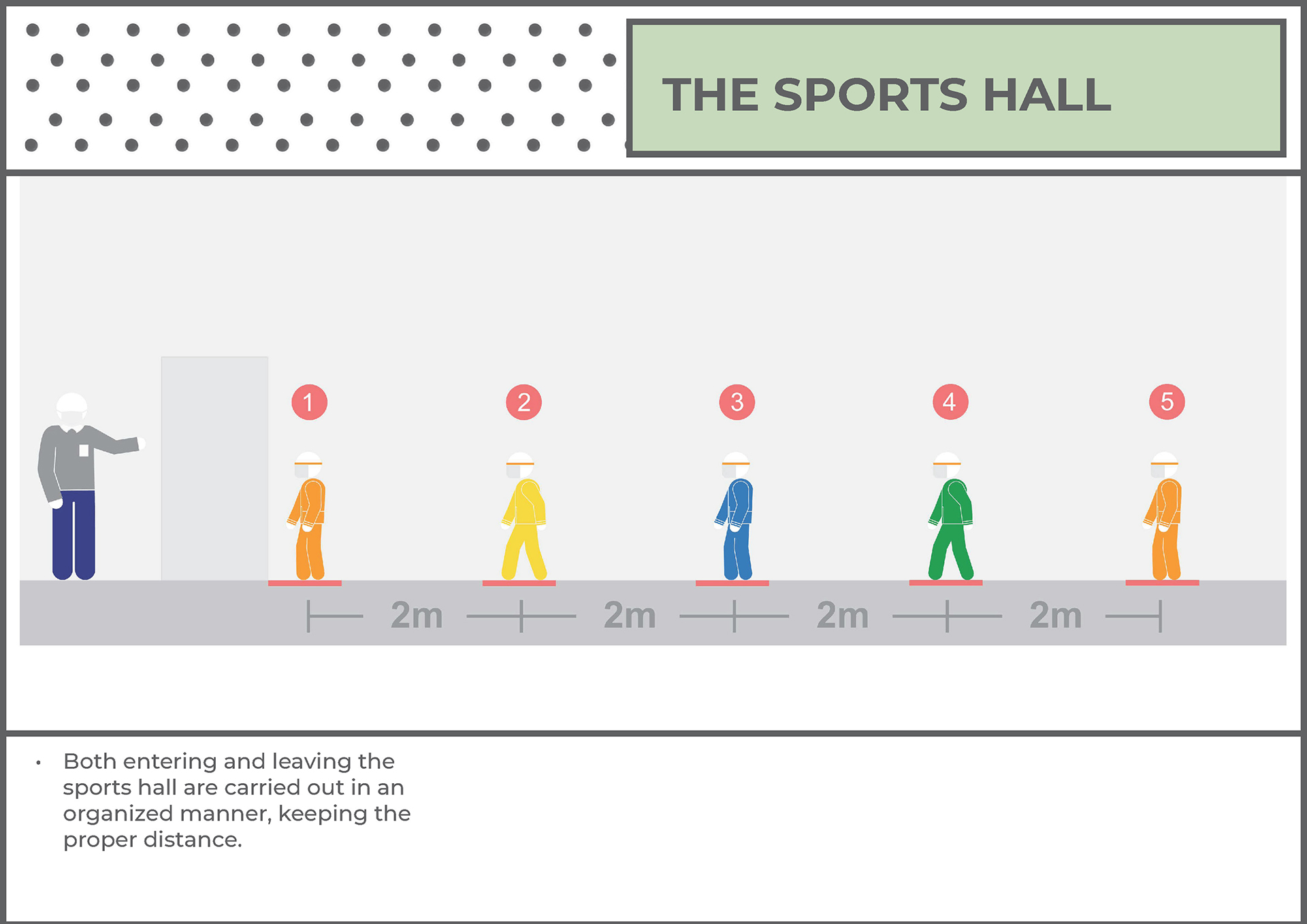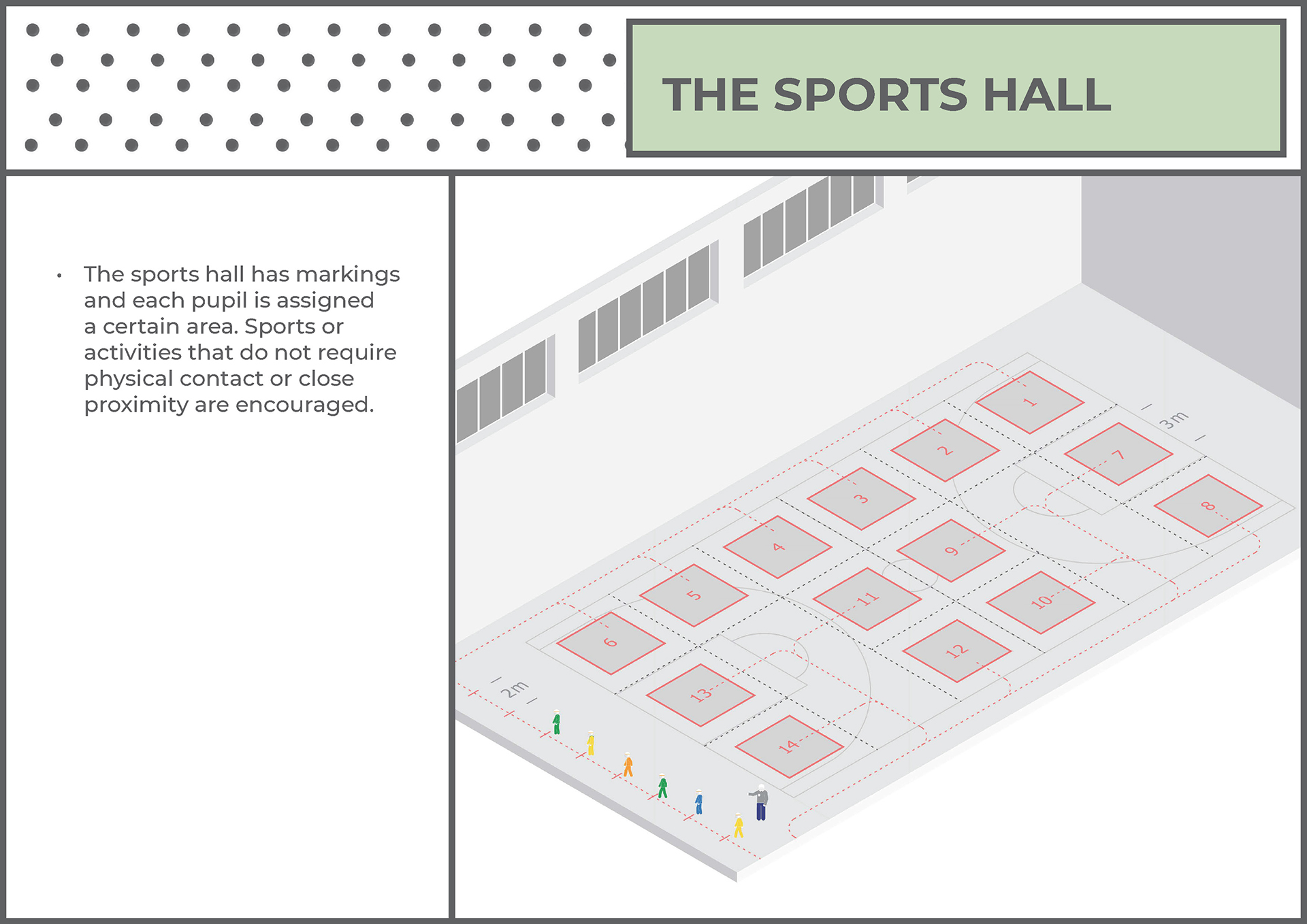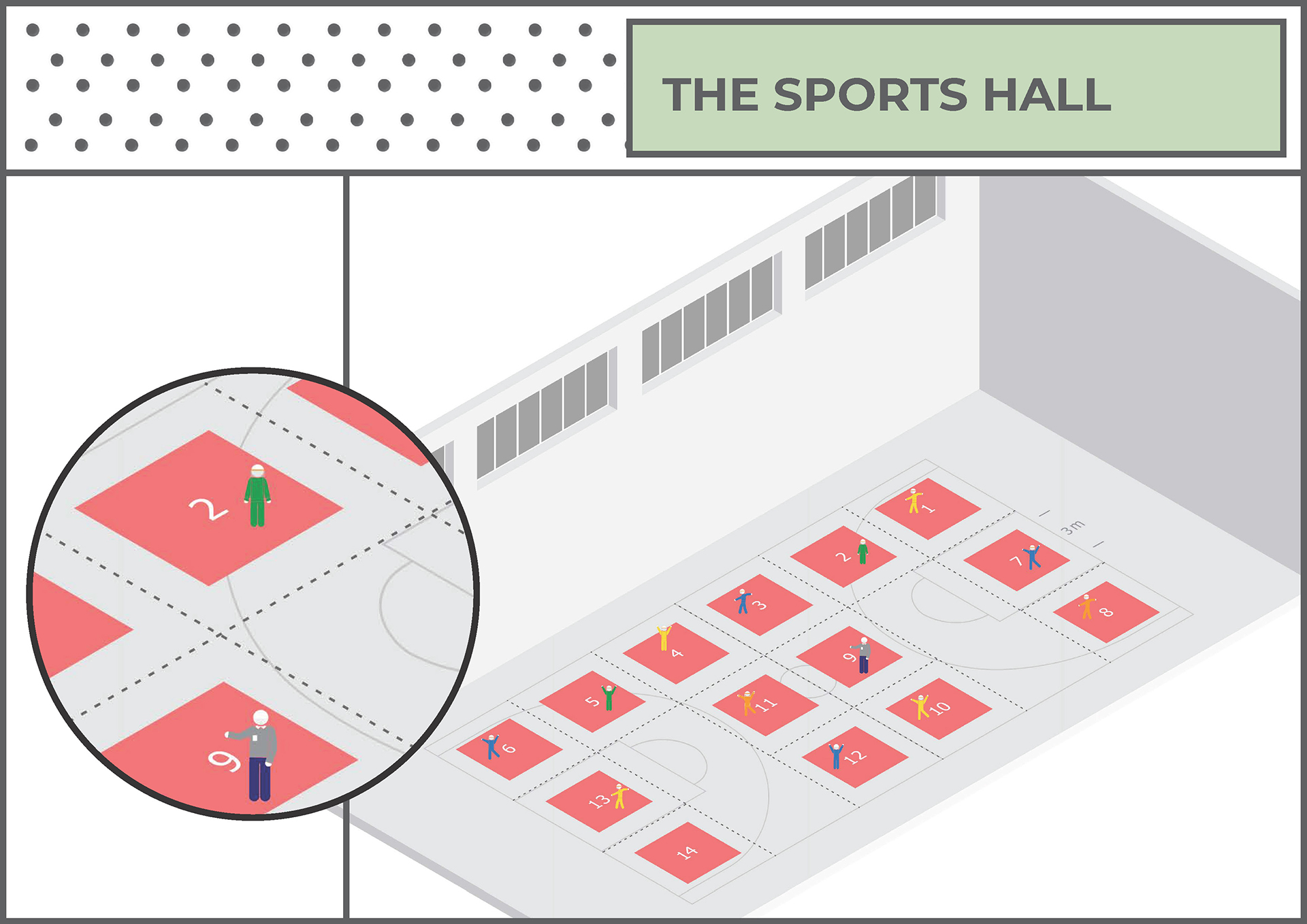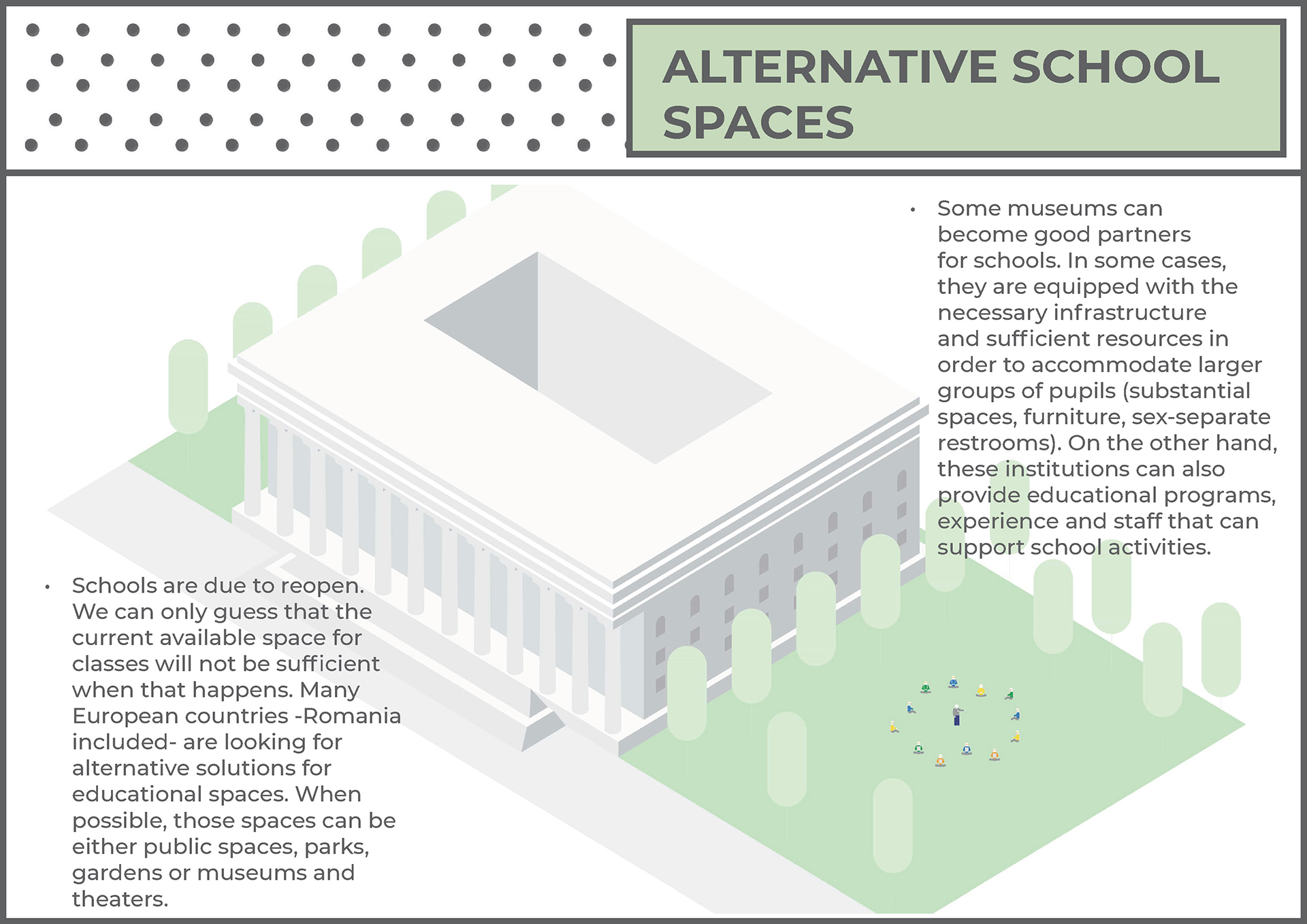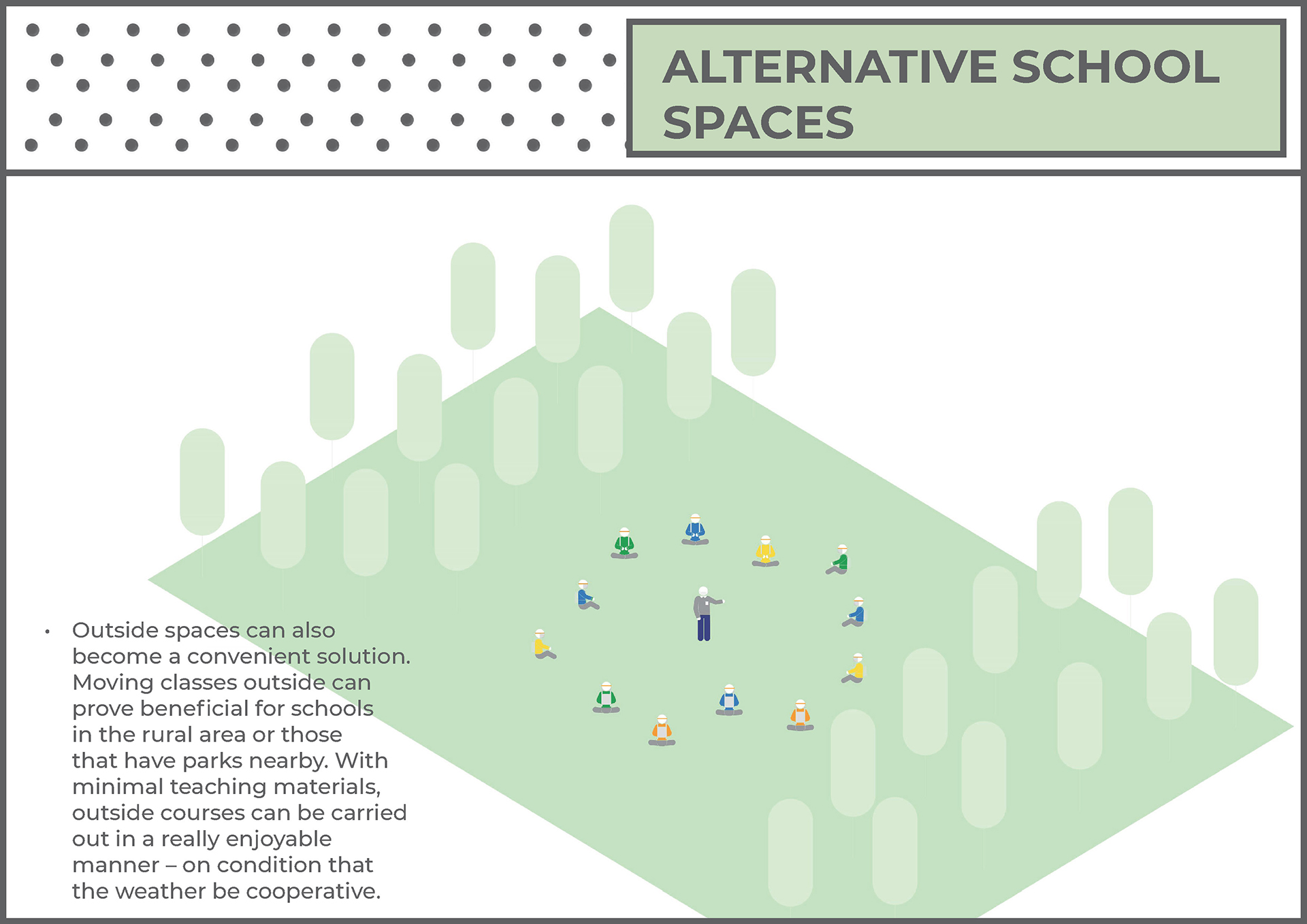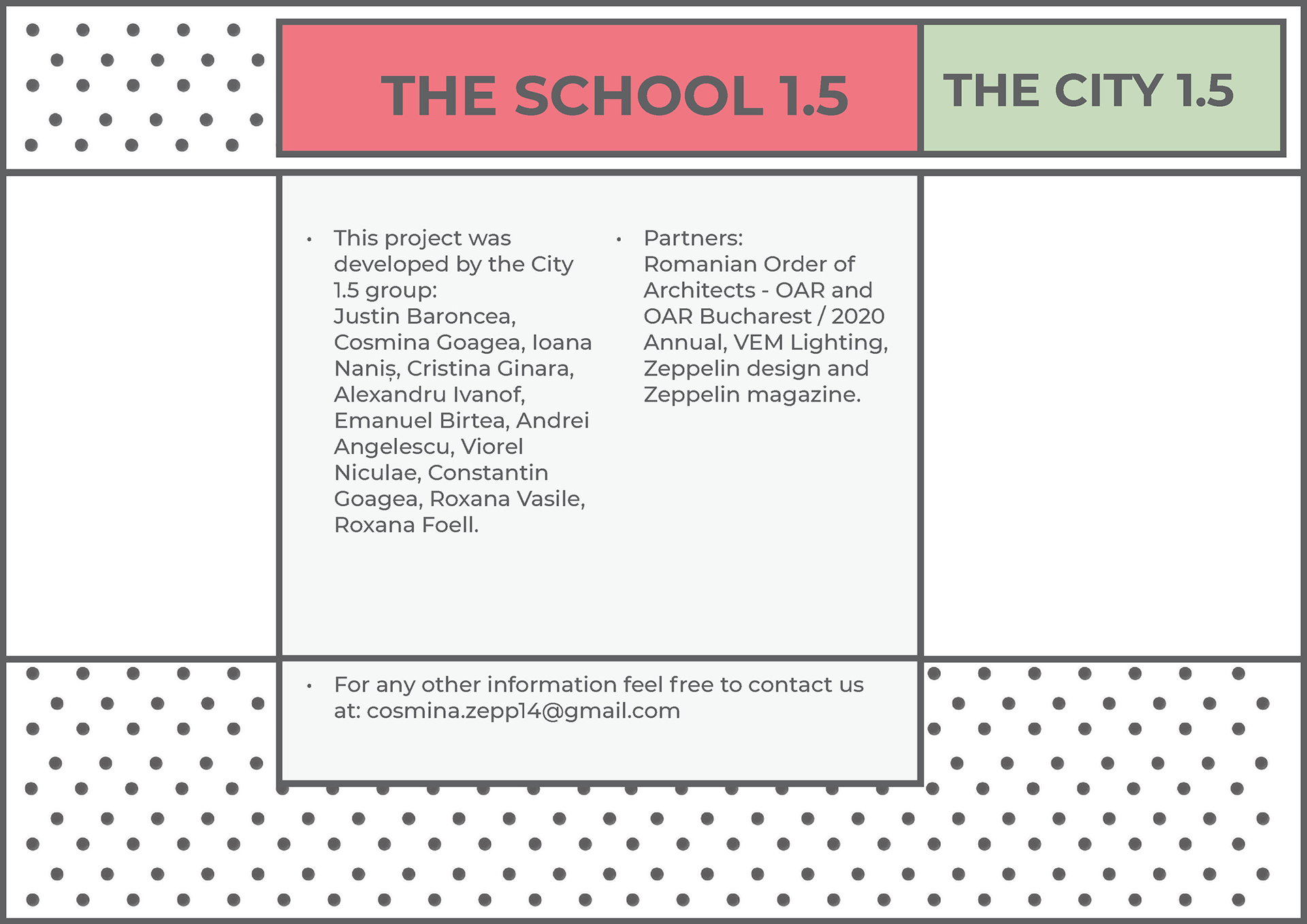The City 1.5 & The School 1.5
Measures and procedures for opening the schools in the fall of 2020
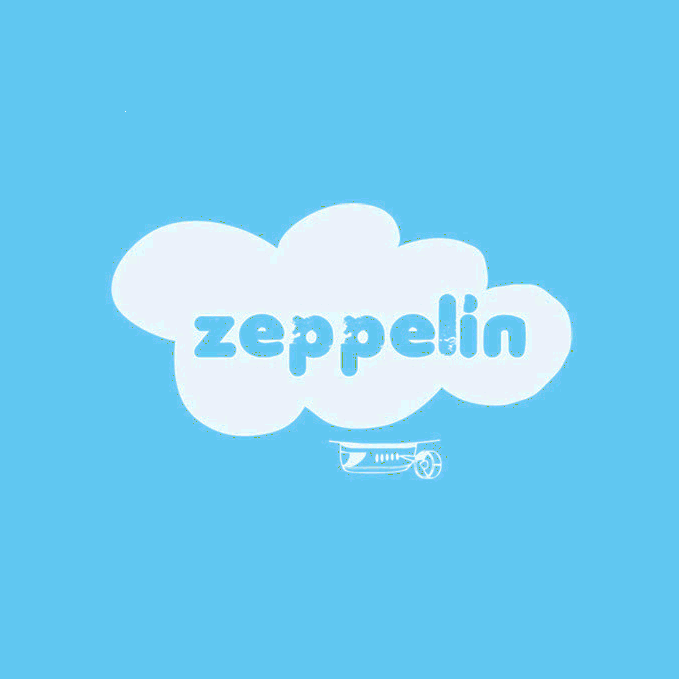 by Zeppelin
by Zeppelin
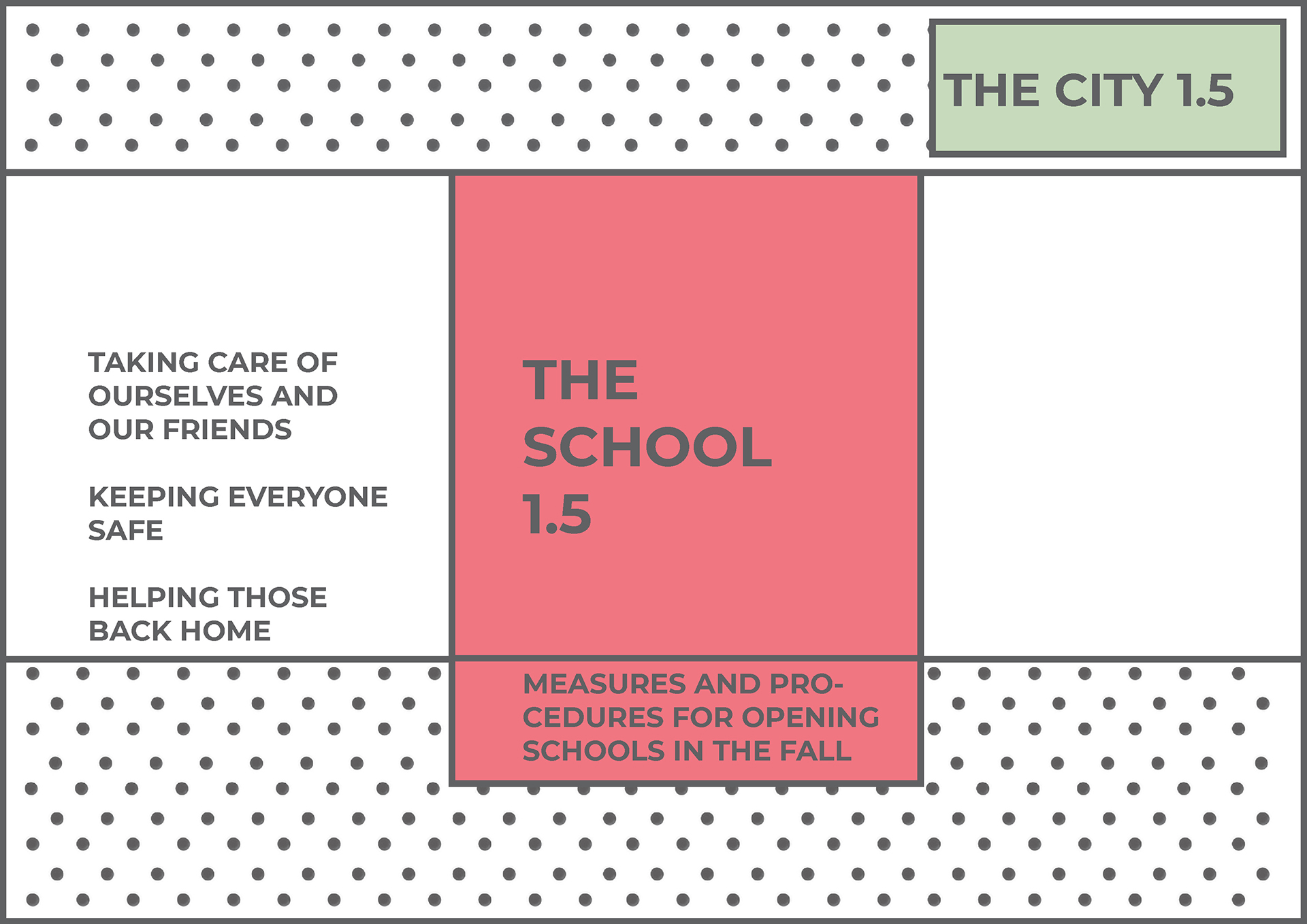
City 1.5
Whether it is short, medium or long-term, the transition period towards normality will probably take a few months, maybe even a year. We are optimistic that things will redress very quickly. The City 1.5 project aims at exploring means in which we may ease our life during this forthcoming phase and, why not, at discovering new possibilities for a better, more efficient urbanity. We are in need of physical distancing solutions, to begin with. However, they can be adopted in a manner which supports both communities and social cohesion. Some might be temporary and reversible types of spatial re-organization; others could be necessary long-term interventions. As long as we’re pushing “restart”, we might as well rebuild a better city, along with the joy and culture of being together.
School 1.5
Considering that schools are about to reopen, we directed our efforts towards drawing up a coherent plan of rules and implementation methods for assuring safe and sanitary functioning conditions. Some solutions are easily accessible and can be immediately put into practice in a DIY type of system. Others, on the other hand, require extensive coordination and bigger resources. It’s important that we make this joint effort to reopen schools, so that children, big and small, are able to continue both learning and playing.
The School 1.5 project started as an independent initiative and is now publicly available to anyone interested, in the shape of a series of rules and guidelines. We hope to hear ideas and feedback, further revisions and as many pragmatic viewpoints as possible, all of which are needed in order to apply these measures in schools by the time fall classes begin. We believe that we live in a world in which politicians listen to experts and that decision-making institutions will take the necessary measures required for safely reopening Romanian schools.
This project is the result of a collaboration between several architects, designers, engineers and educational specialists. A lot of ideas and relevant information came from friends scattered throughout Europe, teachers or parents. We asked people from seven different countries about how schools reopened in their cities or how they prepare to reopen this fall. We also analyzed information provided by ministries or other institutions in Spain, The Netherlands, Sweden, Germany, Italy, France or Belgium. Needless to say, those are different schools with different systems; however, many practices are similar to one another and thus can remain legitimate when it comes to our case as well. Some are adapted to the specific conditions in Romania, whereas others are particular cases that will be treated as such.
What we know:
Classes will be divided into two or three, each series having a number of 12-15 pupils. Online courses and classroom courses will take place in an alternating manner. Numerous platforms are available for supporting online classes; some schools use widespread video-conference systems, while others benefit from dedicated platforms. In order to make good use of these kinds of platforms, teacher training and content adaptation constitute an absolutely necessary stepping stone. On the other hand, online classes are neither readily accessible to everyone, nor easy to follow by all pupils – not all are adapted to this reality of telepresence. Step by step, we will overcome this moment, but time is needed in order to do so. Ultimately, educational experts say that the best-case scenario for most people and also the most efficient way to teach remains through physical presence in schools.
Some measures for establishing physical presence in schools have already been outlined:
Firstly, explaining the rules and educating not only pupils, but also parents and teachers – so that each and everyone knows what needs to be done when arriving, leaving or spending time on school premises. Secondly, the pupil’s well-being is of utmost importance. The vast majority of children will not be affected by the new virus or will not develop symptoms, due to the fact that their immune systems respond differently from those of adults. The message that needs to be put through is that, by learning to take care of themselves and respecting physical distancing measures, they can protect their family, friends and loved ones. They are part of a bigger, more important picture and thus will become the super-heroes of this new adventure.
Furthermore, visual communication and markings on wall or ground surfaces can help keep physical distances. The space is reorganized and circulation through the building should respect the principle of one-way routes as much as possible, in order to avoid different flow intersections or overcrowding some spaces. The new “traffic” rules and ways of using space will be depicted through graphic indicators and color codes.
Frequent hand washing, using water and soap or disinfectants are key aspects. We know that some schools, especially those in rural areas, are very poorly equipped – in these cases setting up a restroom would constitute a considerable step forward. We suggest that this moment be the starting time for properly equipping all Romanian schools with functional and hygienic restrooms, as well as soap and disinfectant dispensers and other necessary materials.
Generally speaking, sanitation will be one of the costliest obstacles to overcome, because it requires personnel and larger quantities of consumables, as well as even more advanced equipment and technologies. All light switches, handles, door knobs, faucets can be replaced with systems that prevent touching surfaces with our hands. Air will be continuously ventilated, by opening doors and windows or by auxiliary mechanical devices. Interior doors can be kept permanently open. Trouble handling the draught? In other countries they don’t have it to begin with. Maybe in this case, our national peculiarities can be adapted.
It is still unclear whether face masks or visors will become compulsory for pupils in Romania; and if they will, what the required ages will be for wearing them. In some countries there are discussions about schools providing this type of gear free of cost, in others the responsibility is passed on to each family while other countries don’t impose wearing them at all. Medical experts have not yet reached a general conclusion on the subject.
Sports halls and courtyards will be used for physical education and recreation, but movement will require no contact and close proximity will be avoided. The processes of going into recess and returning to classroom desks will follow preestablished scenarios.
Some of the most obvious problems that arise are, on one hand, the need for supplementary teaching staff and, on the other hand, the need for more actual physical space. Due to the fact that courses will take place alternatingly – either online or in classrooms -, there will be more groups with less pupils per group, so that distancing rules can be followed. Alternative learning places, such as parks, gardens and public plazas or even partnerships with museums or theaters are possible solutions. Alternative furniture will have to be easy to maneuver, both classes and teaching methods will be different, all of these scenarios are worth taking into consideration.
We’ve put together all this data up until now, illustrated it and will continue to publish information as we go.
This project was developed by the City 1.5 group: Justin Baroncea, Cosmina Goagea, Ioana Naniș, Cristina Ginara, Alexandru Ivanof, Emanuel Birtea, Andrei Angelescu, Viorel Niculae, Constantin Goagea, Roxana Vasile, Roxana Foell.
Partners: Romanian Order of Architects - OAR and OAR Bucharest / 2020 Annual, VEM Lighting, Zeppelin design and Zeppelin magazine.
